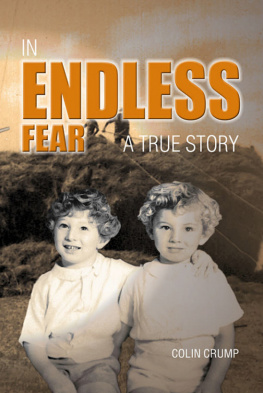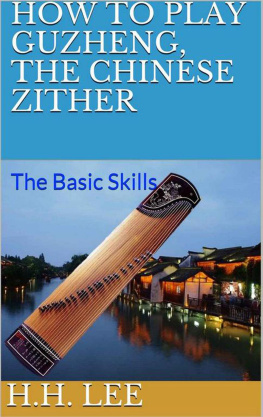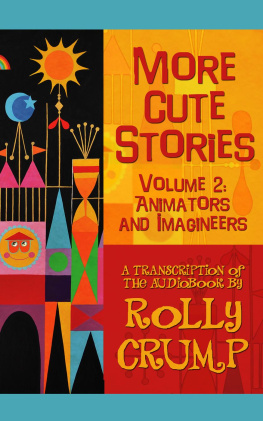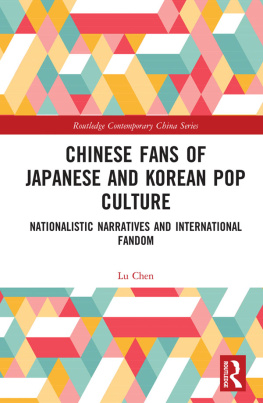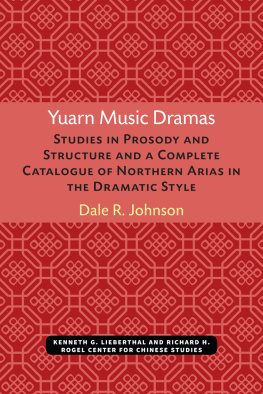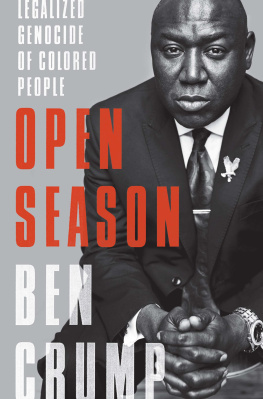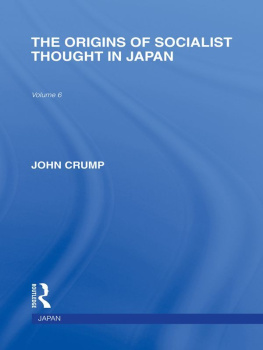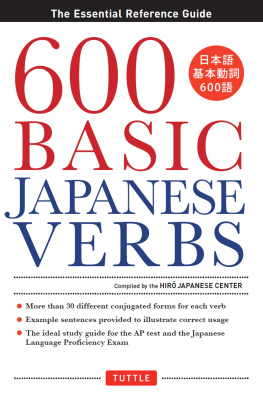J. I. Crump - Chinese and Japanese Music-Dramas
Here you can read online J. I. Crump - Chinese and Japanese Music-Dramas full text of the book (entire story) in english for free. Download pdf and epub, get meaning, cover and reviews about this ebook. year: 2020, publisher: University of Michigan Center for South and Southeast Asian Studies, genre: Detective and thriller. Description of the work, (preface) as well as reviews are available. Best literature library LitArk.com created for fans of good reading and offers a wide selection of genres:
Romance novel
Science fiction
Adventure
Detective
Science
History
Home and family
Prose
Art
Politics
Computer
Non-fiction
Religion
Business
Children
Humor
Choose a favorite category and find really read worthwhile books. Enjoy immersion in the world of imagination, feel the emotions of the characters or learn something new for yourself, make an fascinating discovery.
- Book:Chinese and Japanese Music-Dramas
- Author:
- Publisher:University of Michigan Center for South and Southeast Asian Studies
- Genre:
- Year:2020
- Rating:4 / 5
- Favourites:Add to favourites
- Your mark:
- 80
- 1
- 2
- 3
- 4
- 5
Chinese and Japanese Music-Dramas: summary, description and annotation
We offer to read an annotation, description, summary or preface (depends on what the author of the book "Chinese and Japanese Music-Dramas" wrote himself). If you haven't found the necessary information about the book — write in the comments, we will try to find it.
Chinese and Japanese Music-Dramas — read online for free the complete book (whole text) full work
Below is the text of the book, divided by pages. System saving the place of the last page read, allows you to conveniently read the book "Chinese and Japanese Music-Dramas" online for free, without having to search again every time where you left off. Put a bookmark, and you can go to the page where you finished reading at any time.
Font size:
Interval:
Bookmark:

THE UNIVERSITY OF MICHIGAN
CENTER FOR CHINESE STUDIES
MICHIGAN PAPERS IN CHINESE STUDIES
NO. 19
CHINESE AND JAPANESE
MUSIC-DRAMAS
Edited by
J. I. Crump
and
William P. Malm
Ann Arbor
Center for Chinese Studies
The University of Michigan
1975
Open access edition funded by the National Endowment for the Humanities/Andrew W. Mellon Foundation Humanities Open Book Program.
Copyright 1975
by
Center for Chinese Studies
The University of Michigan
Printed in the United States of America
Cover illustration by Elleanor H. Crown.
ISBN 978-0-89264-019-5 (hardcover)
ISBN 978-0-472-03802-2 (paper)
ISBN 978-0-472-12742-9 (ebook)
ISBN 978-0-472-90137-1 (open access)
The text of this book is licensed under a Creative Commons Attribution-NonCommercial-NoDerivatives 4.0 International License: https://creativecommons.org/licenses/by-nc-nd/4.0/
CONTENTS
This book is the result of a conference on the relations between Chinese and Japanese music-drama held at The University of Michigan (Ann Arbor), October 14, 1971, under the auspices of the Association for Asian Studies and the Center for Japanese Studies, the Center for Chinese Studies, the School of Music, and the Speech Department of The University of Michigan. One important inspiration for the creation of such an interdisciplinary conference was the fact that each participant had found, after years of individual research on music-drama in East Asia, consistent frustration caused by attempts to deal by himself with multiple cultural and technical problems. Another motivating force was an awareness among many members of the four disciplines involved (Chinese, Japanese, music, and drama) that the topic is in fact one of the largest untouched fields of scholarly endeavor in both Asian and theatrical studies.
The conference was founded on the assumption that no one scholar could be an expert in all the topics. Thus, each member delivered to the others copies of a draft chapter on one aspect of one area of the subject in advance of the meeting. The four days were then spent helping each other with comments and added information from each individuals area of expertise, which took on new significance in the context of the studies of others. With the aid of a rapporteur (Dale R. Johnson of Oberlin) all this was put together into the collection which forms this book. The subject is by no means closed; on the contrary, it is now opened in a scholarly "multimedia" direction that we hope will stimulate further efforts in this exciting field.
William P. Malm
J. I. Crump
Ann Arbor 1975
| HK | Hsi-hseh Hui-k'ao |
| Huo-yeh | Chung-hua Huo-yeh Wen-hsan |
| Sixty | Liu-shih-chung Ch' |
| YCH | Y an-ch' Hsan |
| ZJBS | Zeami jroku-bu sh hyshaku |
J. I. Crump
There were giants in the earth in those days and... mighty men which were of old, men of renown.
Genesis 6:4
I Introduction: The Formularies
Early Ming dynasty literature was devoted to forms and criteria belonging to the Tang and Sung dynasties (probably as a reaction to the foreign Yan), but as the dynasty matured and drama became more and more a proper medium for serious writers, men began to comment on and appreciate the older Yan drama and to evaluate, criticize, and admire those mighty men which were of old, and who lived in Yan times. Possibly because the lingering orthodox view was that all good things had to have come from the great Chinese dynasties of the past, Ming critics of the Yan giants often comment that of course, these ch were heavily influenced by northern border music and so were not to be considered in the same universe, for example, as the Sung tzu (lyrics). But having got past this pro forma preamble, they then subject classical Yan musical drama to what is often searching and honest criticism.
There is a saying which reveals a part of the healthy irreverence the Chinese have toward literary criticism: Hsen y wn; hu y ts , First someone must write literature; others will find rules for it later. It is more than a truism, it is an injunction: the author should be so busied with his creation that he has little time or taste for criticizing the product. If our only alternatives were the literature or the criticism there would be no contest, but happily we have, in the case of Yan musical drama, both the wen created during the Mongol era and the tse applied to it during the Ming dynasty.
We often find it useful to make some of the same observations about historical periods that we do about humans, and certainly the Other than these, however, there is nothing which seriously concerns itself with passing artistic judgment on the tsa-ch musical drama during its most flourishing age.
But almost as soon as the Ming government was well established (let us say by 1390), we begin to get publication of the so-called " ch' formularies" ( ch'-p'u) which not only gave examples of great lyrics from dramatic ch' (arias) on which to pattern one's own efforts, but also included much evaluative, critical and appreciative comment on Yan drama, dramatic theory, and the requirements of composing to music and for performanceall done in an age when the Yan dramatic form was almost extinct. Almost without exception these critics show admiration (often amounting to reverence) for Yan tsa-ch and the men who wrote them even though it was, by the time all but the earliest formularies were written, an art form which could no longer be staged, for the simple but crucial reason that no one living knew the music.
This considerable body of critical literature is valuable for insights it provides both on the tsa-ch and on Ming tastes. The ch' formularies are without doubt our best sources of information, but they must be used with the following considerations in mind:
(1) Many of the best known among the Ming treatises deal indiscriminately with both the longer Ming ch'uan ch'i drama form and the Yan tsa-ch in such a fashion that one is not always sure which genre is being evaluated. This shortcoming is often informative, however, since the critics (who are frequently composers as well) are trying to synthesize their requirements for Chinese drama in general, rather than for either of the two forms in particular.
( the earliest and in some ways the most important of the formularies, begins the book with his own classification of musical verse (according to both topic and style), continues with a list of nine types of parallelism, a list of 187 Yan poets (whose verse he tries to characterize in a sentence or two), 150 others of second rank, sixteen gifted playwrights of the Ming era, general comment, the traditional twelve divisions of Yan dramatic subject matter, and concludes the whole first section with these interesting but non-sequitur observations:
... Chao Tzu-ang [a Yan dramatist] said: "When a youth from a good family plays in a tsa-ch it is called living a life of the troupe, ( hang-chia sheng-huo ) but when entertainers ( chang-yu) act in it it is called a slave play ( li-chia pa-hsi ). Men of good family always felt that the shame of acting cost them so dear that there never were very many; and there are fewer today than ever. Therefore, to call acting by entertainers life of the troupe is to be very wide of the mark.
Someone asked him why [these terms were used] and he replied, Tsa-ch come from the pens of scholar-officials and poets or writers who are all freemen. If our class did not write them, how could actors act in them? If one pursues the root of the matter, it becomes clear that actors are truly our slaves.
Font size:
Interval:
Bookmark:
Similar books «Chinese and Japanese Music-Dramas»
Look at similar books to Chinese and Japanese Music-Dramas. We have selected literature similar in name and meaning in the hope of providing readers with more options to find new, interesting, not yet read works.
Discussion, reviews of the book Chinese and Japanese Music-Dramas and just readers' own opinions. Leave your comments, write what you think about the work, its meaning or the main characters. Specify what exactly you liked and what you didn't like, and why you think so.


